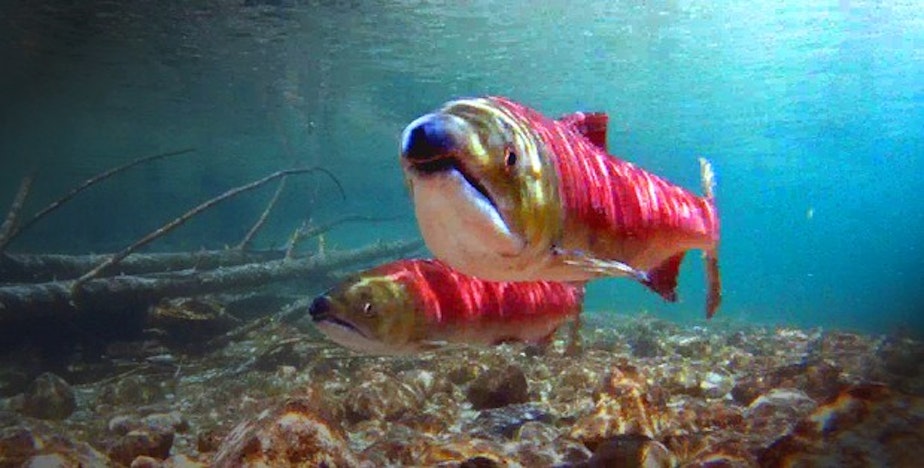Federal, Washington Officials Spar Over Water Quality Regulations At Dams

Sockeye salmon.
Washington regulators want water at dams on the Columbia and Snake rivers to meet state standards. They say that would make it safer for imperiled salmon, especially during hot summers. But the U.S. Environmental Protection Agency is putting a stop to those plans — for now.
The Washington Department of Ecology recently opened up a public comment period on a certification that, for the first time, would allow it to enforce state water quality standards at nine federal dams. That certification was tied to federal draft permits.
The next day, after months of back and forth, the EPA sent a letter asking Ecology to pullback. Federal officials requested the state return all federal materials and draft permits.
The unusual move surprised state regulators, leaving them with more questions than answers, said Colleen Keltz, a spokeswoman for the Washington Department of Ecology.
“So we’re asking, are you guys not going to issue these permits? Are you guys going to get back to us soon with updated draft permits that you want certification on? Where is this going?” Keltz said.
Sponsored
Keltz said Ecology is not backing down and will continue accepting public comments on the certification process through Feb. 19, even though it’s unclear where the state will go from there.
In an emailed statement, EPA spokesman Mark MacIntyre said the federal draft permits needed additional review.
“We fully intend to reinitiate our requests for water quality certification after we have completed our internal review and updated the preliminary draft permits, as appropriate,” MacIntyre wrote.
He did not give a timeline for when that review would be completed.
This new certification would have brought water federal dams in line with state water quality standards, Ecology’s Colleen Keltz said.
Sponsored
“We would want it to have that type of a scope, that it would show parity in what we’ve done with other dams that have licenses,” Keltz said.
The state’s certification would regulate temperatures at the dams, an especially important standard during hot summer months and as the climate warms. Water temperatures above 68 degrees Fahrenheit can kill migrating fish.
In 2015, low water flows and hot temperatures killed thousands of salmon. Snake River sockeye faced the most dramatic losses. Only a fraction of the run reached their spawning grounds.
Environmental groups worry the federal government is shelving its responsibilities to protect threatened and endangered salmon and steelhead. The entire process started when Columbia Riverkeeper sued the federal government in 2014 and 2017.
Brett VandenHeuvel, the group’s executive director, said the federal government has not adequately protected salmon for years. He said that’s why the state needs to provide oversight.
Sponsored
“This is a huge deal. Salmon are dying because the Columbia River is too hot. And orca calves are dying because the mothers rely on those salmon to pack on the fat before giving birth. We can’t let politics get in the way of saving these species,” VandenHeuvel said. [Copyright 2019 EarthFix]



